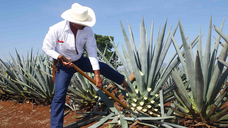The wave of new launches comes as consumption of no/low products combined rose by +5 percent in 2023 in the world’s top 10 markets. No/low volumes are expected to rise at a CAGR of +6 percent between 2023 and 2027, according to IWSR forecasts, with growth spearheaded by no-alcohol (CAGR of +7 percent over the same timescale).
“The growth in volume consumption of no-alcohol products may be moderating, but innovation remains vital to the category,” says Susie Goldspink, Head of No- and Low-Alcohol Insights, IWSR. “Our data shows that LDA Gen Z and Millennial consumers in particular are more interested in trying new no-alcohol alternatives than older cohorts – and NPD is emerging in a range of segments and formats to suit different occasions and demographic groups.”
The extension of established full-strength brands into no-alcohol can be an effective means of attracting consumers into the category, thanks to their pre-existing equity and familiarity. In Spain, for example, zero-alcohol spin-offs of popular gin brands, such as Tanqueray 0.0 and Seagram’s 0.0, are transforming a no-alcohol market previously dominated by legacy products. “No-alcohol spirits are in a state of transition in Spain, as the focus shifts from traditional liqueurs towards big brand propositions, principally in gin,” explains Dan Mettyear, Research Director EMEA, IWSR. “These products are marketed well, have a good distribution network and are increasingly accepted by consumers.”
A similar approach to NPD is seen in Japan, where Suntory has launched a number of no-alcohol canned products recently under the Nonaru sub-brand – including red, white and rosé wines, a ‘whisky’ highball and a no-alcohol gin-and-tonic.
The increasing popularity of no-alcohol agave spirit alternatives mirrors the wider tequila and agave spirits growth trend in North America and beyond, encompassing RTDs and celebrity associations.
Alcohol adjacents or functional beverages contain active ingredients that hint at health benefits, stress reduction, mood alteration and pleasure, as well as effects such as a buzz or acting as a social lubricant. Ingredients include CBD, adaptogens (natural substances believed to help reduce stress) and nootropics (natural, semi-synthetic and synthetic molecules claimed to aid cognitive function).
In Canada, alcohol adjacent volumes increased by +75 percent in 2023, according to IWSR data, and are forecast to grow at a CAGR of +45 percent between 2023 and 2027, although off a small base. Alcohol adjacent volumes in France are also predicted to expand at a CAGR of +45 percent over the same timescale, after growing by +35 percent in 2023. “Abstaining from alcohol does not have to mean ‘going without’ any more,” says Goldspink. “There is clear momentum for products offering an alternative to the effects of alcohol. “NPD in mood-altering products is on the rise – although regulation needs clarification to enable further category growth.”




